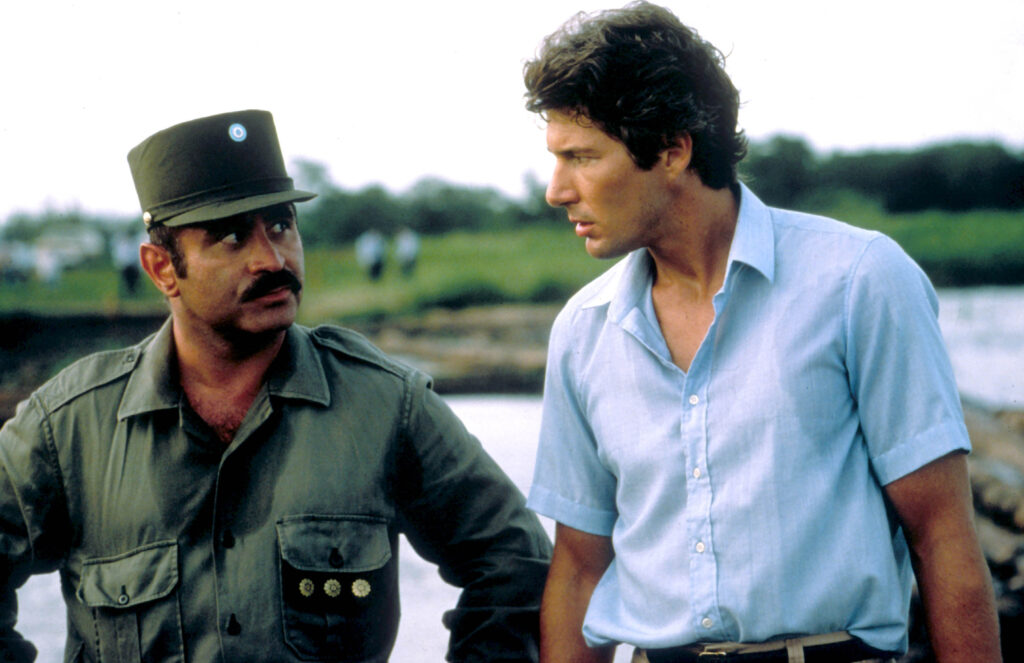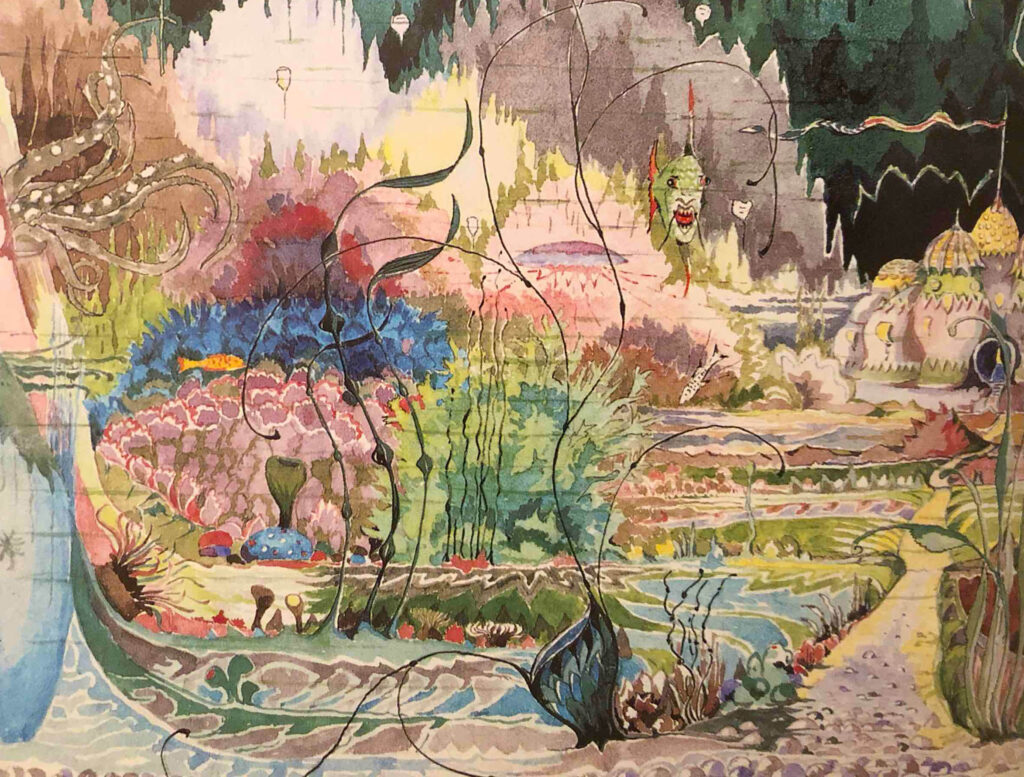The Dream of the Rood
anonymous (Anglo-Saxon)
7th-8th century
(In a vision, the cross of Christ reflects with awe on its part in the death of God.)

“The most beautiful of the medieval religious poems”. This is often said of The Dream of the Rood. The first time I read this assessment—I had never even heard of the poem—it was by the Anglo-Saxon scholar R. K. Gordon in the colorful old Everyman Library series. The description as beautiful captured my attention. And it is beautiful. The vivid imagery, the incorporation of heroic and mystical themes, the profound devotion, the ethereal vision, the very language. Seeing such a work called beautiful is gratifying, for it highlights a virtue that is often languishing in recent religious literature, and religious sensibility in general. In both East and West, the enjoyment of beauty has frequently been marred by a suspicion that it may tempt one to elevate the lower over the higher, or to submit to illusory or distracting pleasure. Calling a religious poem “beautiful” recalls a time and a place when beauty was a central value in the building of churches, in the composition of sacred music, in devotional images and writings, and even in the grounds for the faith commitment itself. There have been times and places when the contemplation and enjoyment of beauty was widely embraced, on the idea, as Aristotle said, that “Beauty is the gift of God.”
The Honorary Consul
Graham Greene
1973
(Argentinian revolutionaries abduct the wrong political figure by mistake, and one cynical acquaintance is the only one who cares… perhaps not even he does.)

Graham Greene, though a writer of great variety, is known for his “seedy” settings (he popularized the adjective, much to his regret) and the moral dimension of his very human characters. In these respects The Honorary Consul is an enduring and typical example of Greene’s style. Early in the book the protagonist Eduardo Plarr criticizes the romantic novelist Saavedra by saying that “life isn’t like” the way that author writes. Here Greene crafts a novel according to the alternative strategy; to show what life is like, with real people encountering real difficulties. The characters’ frail humanity and the ambivalence of their commitments will encourage us imperfect readers to relate honestly to them. The author refuses to vault skyward into heroism, idealism, wonder, or joy, perhaps as these are short-lived and usually confused in the real world. The good guys are bad enough to prevent us from admiring them, and the bad guys are good enough to prevent us from demonizing them. No character has an entirely appetizing mixture of traits, but no character is thoroughly distasteful either.
Like many readers, my gut draws me towards works whose moral distinctions rise into sharper relief—I enjoy esteeming my protagonists. If we insist on this criterion, Greene will not fare well. After meeting the main characters and following them around for a while, we might question whether they are likable enough company. Such readers must take a step of faith throughout the first 100 pages or so, that Greene is telling us a story that we will really care to read. Embarking on the book was for me like hearing the first few sentences of a party yarn that we fear might not be worth the patience. However, may no reader give up before realizing Greene’s purpose! The first impression fades and becomes irrelevant as one reads onward. The grayscale characterization is not due to neglect or apathy on the part of the author. Far from it—the ambiguity represents a strategy conceived for a distinct moral purpose, as paradoxical as this seems. A novel need not be moralizing to be morally interesting. (more…)
“On Fairy-stories”
J. R. R. Tolkien
1938
(The realm of Faërie is no frivolity, but a place of profound enchantment, offering glimpses into deep mysteries and addressing fundamental human desires.)

“Lies, though breathed through silver”. It was September 1931. Little could J. R. R. Tolkien have guessed that this insult of myth, from the mouth of his hard-headed friend C. S. Lewis, would spur him to a rebuttal that would blossom into the most sustained and thoughtful argument for the value of fiction in the history of literature. And, while we’re at it, little could Lewis have guessed that Tollers’ argument, as they walked in a park behind Magdalen College, Oxford, would plant a mustard seed that would eventually transform Lewis into a myth-maker himself, not to mention the most celebrated writer on God (that myth of all myths) in the twentieth century. What was that argument? What path could possibly carry a wayfarer from the valley where myths are childish propaganda, to the hilltop where they are powerful elicitors of fleeting joy and hint at truths beyond our comprehension?
The History of Mr. Polly
H. G. Wells
1910
(A man of precisely 37.5 years of age can’t seem to find success or happiness in life… perhaps he has to do something drastic.)

“HOLE!” said Mr. Polly, and then for a change, and with greatly increased emphasis: “ ‘Ole!” He paused, and then broke out with one of his private and peculiar idioms. “Oh! Beastly Silly Wheeze of a Hole!”
Thus begins an entertaining fictional biography of a man who really needs a whack upside the head– one of several greats in that odd subgenre– Tom Jones, Babbitt, and Updike’s Rabbit series, for examples. (H. G. Wells writing fictional biography? In a contemporary setting? This might surprise those of us, such as myself, who had equated him with science fiction and socialist nonfiction. But anyway…) Our protagonist is an endearing and vivid, if frustrating character, who hides his depression with funny one-liners and his poor education with deliberate mispronunciations. And, as with many colorful characters in real life, beneath the wit cowers a man who hasn’t a clue where he’s going. His path through life is that of a flat boat with untethered sails– he might as easily plummet to his death over a waterfall as drift into a homely port. Or, to use Alfred Polly’s own metaphor, he’s in a hole. And no amount of quaint phrasing and amusing epithet, no ability to make women giggle, and no success as a shopkeeper is going to hoist him out of it.



The Time Machine
October 18, 2020 / 1 Comment on The Time Machine
H. G. Wells
1895
(A push on a lever, a blurry dizziness, a clap of thunder… and a veil falls away to reveal the world of our far distant descendants.)
Breaking the rule that you have to proceed constantly forward in time at precisely one second per second is as old as the human imagination, appearing even in ancient stories where a god or a bonk on the head could slip you to another point in history. Surprisingly enough, though, the idea of a device or vessel that can carry one through time in the way that wagons and boats carry us through space is apparently less than a century and a half old. Perhaps the backwards-running clock in an 1881 Edward Page Mitchell story is the first time machine in literature; or else, if you have to be able to climb into the thing for it to count, then Enrique Gaspar’s “anacronópete” of his now little-known 1887 novel of that name narrowly beats out H. G. Wells’ 1888 story “The Chronic Argonauts”. Evidently the hyperindustrializing and engine-happy Americans and Western Europeans of the late 19th century, inspired no doubt also by the first stirrings of modern physics, were beginning to let their minds wander as to what a precisely engineered assemblage of gears and rods and bolts might be able to do. The Time Machine is the quintessence of this concept in literature, and is one of the best science fiction stories we have, even given the golden age of that genre that followed.
(more…)